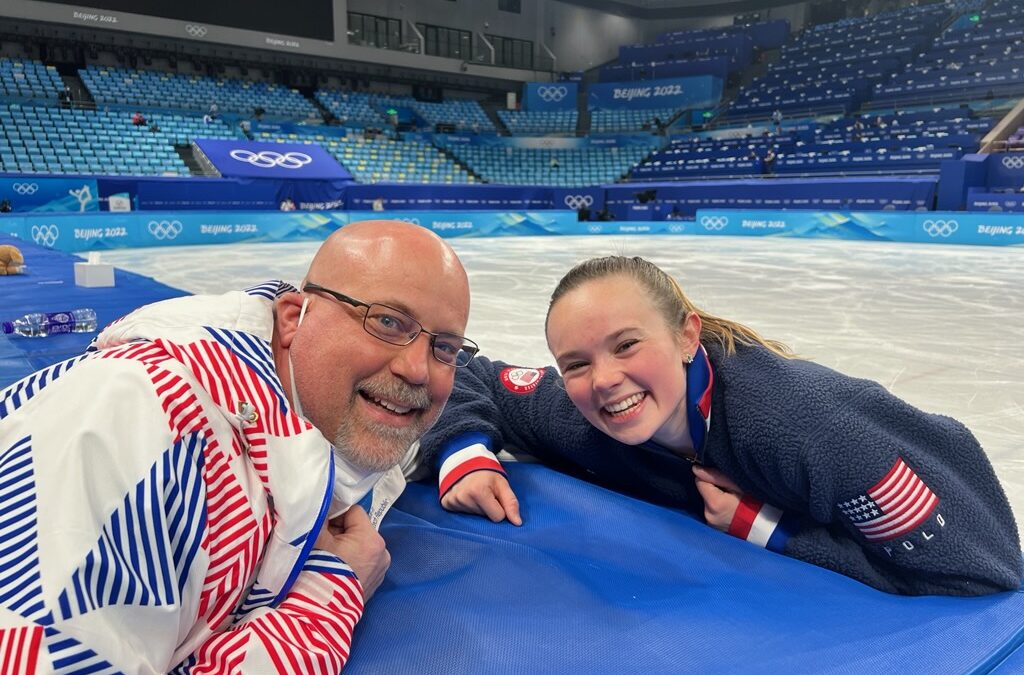How to stay healthy and feel good to perform at your best
Figure skating places a heavy toll on an athlete’s body. Many elite skaters are training five to six days a week with on and off-ice sessions lasting up to five hours a day. The intensity and volume of training, along with repetitive movements can lead to muscle tightness, muscle strength imbalance, and fatigue. This can cause a decrease in performance, loss of flexibility, pain, and injury that can keep a skater off the ice and unable to perform. The goal of massage and rehabilitation is to keep the athlete healthy and feeling good so they can perform at their best. Prehab is a common term in the healthcare world that is also a key element of a skater’s training. The goal of prehab is to identify common injuries in figure skating along with each athlete’s personal injury history and devise a program that will minimize the incidence of injury throughout the season.
Assuming you do not have a current injury, the focus should be on prehab to assist in preventing future injuries. Assessing how you move, your mechanics, strengths, weaknesses and prior injury history should all be assessed in order to properly devise a program.
YOUR HIP STRENGTH
Hip strength and single-leg squat mechanics play a huge role in preventing injuries such as patella tendinitis, IT Band Syndrome, and stress reactions in the bones of the foot. Proper mechanics of the single-leg squat include the chest slightly tilting forward, the hips gliding backward and the knee moving slightly over the toe. The trunk angle and shin angle should be parallel.
HIP REHABILITATION EXERCISES
Hip strengthening exercises focus mainly on the gluteus medius and maximus. The gluteus medius assists in better balance as well as keeping the knee under the hip allowing more stable jumps and landings. The gluteus maximus assists in hip extension and can improve vertical jump. Examples of hip strengthening exercises include a single-leg squat and single-leg standing hip rotations. The focus of single-leg squats is on proper mechanics and keeping the knee beneath the hip without a valgus or inward movement. For the standing hip rotations, the skater stands on one leg with a slight knee and hip bend, then rotates the pelvis and shoulder away from the stationary leg as in opening and closing a door on a hinge.
BENEFITS OF MASSAGE
Massage or soft tissue work is another form of therapy that can help a skater remain healthy and perform at their best. Massage can assist in reducing muscle tension, improving circulation, increasing joint mobility and flexibility along decreasing pain and soreness. Massage can be a general term and can be used to work on the body as a whole or can be focused on individual areas of concern. There are various forms of massage that can be useful to skaters such as Swedish, Deep Tissue, Hot Stone, and Sports massage. Choosing a form may be individualized to the skater’s preference or needs as a one-size-fits-all approach isn’t necessarily the best.
The massage focus should depend on the individual’s needs. Some skaters may feel good overall and just require a general massage covering the whole body. Others may need to focus on specific areas such as the lower back, hips, or quadriceps musculature that typically get tight and sore from skating. Soft tissue work in these specific areas is focused on alleviating muscle tightness and soreness and typically includes the motion of the body part. Active Release techniques or cupping may also be useful in these cases to regain muscle pliability and range of motion.
STAYING HEALTHY
As skaters progress in their careers, adding massage, prehab, and rehabilitation services is imperative in maintaining health and improving performance. The services should begin in the preseason and be maintained throughout the season. Frequency may vary and finding what works best for you may take some trial and error. Consistency is the key element. If a skater is experiencing pain that either keeps them off the ice or lasts for more than a week, they should seek professional help from an athletic trainer, physical therapist, or sports physician. Athletic Trainers and physical therapists should be able to handle rehab and prehab programs along with massage and massage therapists are great for the general massage of healthy athletes. When choosing a provider, always ask about their experience with an athletic population and figure skaters specifically so they can focus on your needs and are aware of the demands of your sport.
Chris Phillips is an athletic trainer and strength and conditioning specialist with 30 years of experience in professional hockey, football, and soccer. Chris currently works with US Figure Skating and Czech Republic Figure Skating covering various competitions. He was named the athletic trainer for the Czech Republic Figure Skating Team at the 2022 Winter Olympics. Chris can be reached via his website at www.competeperformance.com

